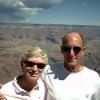the dreaded base to final turn
-
Members Online
- Ron McBride
- jsimmons619
- Little Dipper
- Scopes
- Rmfriday
- Scott Ashton
- GeeBee
- gabez
- cferr59
- Sense
- thomas1142
- McMooney
- Hank
- ResumeNormalSpeed83
- Greg Ellis
- Woodslayer
- ta2too
- chrisburdzy98
- Blackroc
- Marcopolo
- toto
- tankles
- Jerry 5TJ
- n13951pm
- Oklahoma Mooney
- da3b242
- gwav8or
- Crawfish
- Rsmithref
- Joseph Long
- mikey757
- RescueMunchkin


Recommended Posts
Join the conversation
You can post now and register later. If you have an account, sign in now to post with your account.